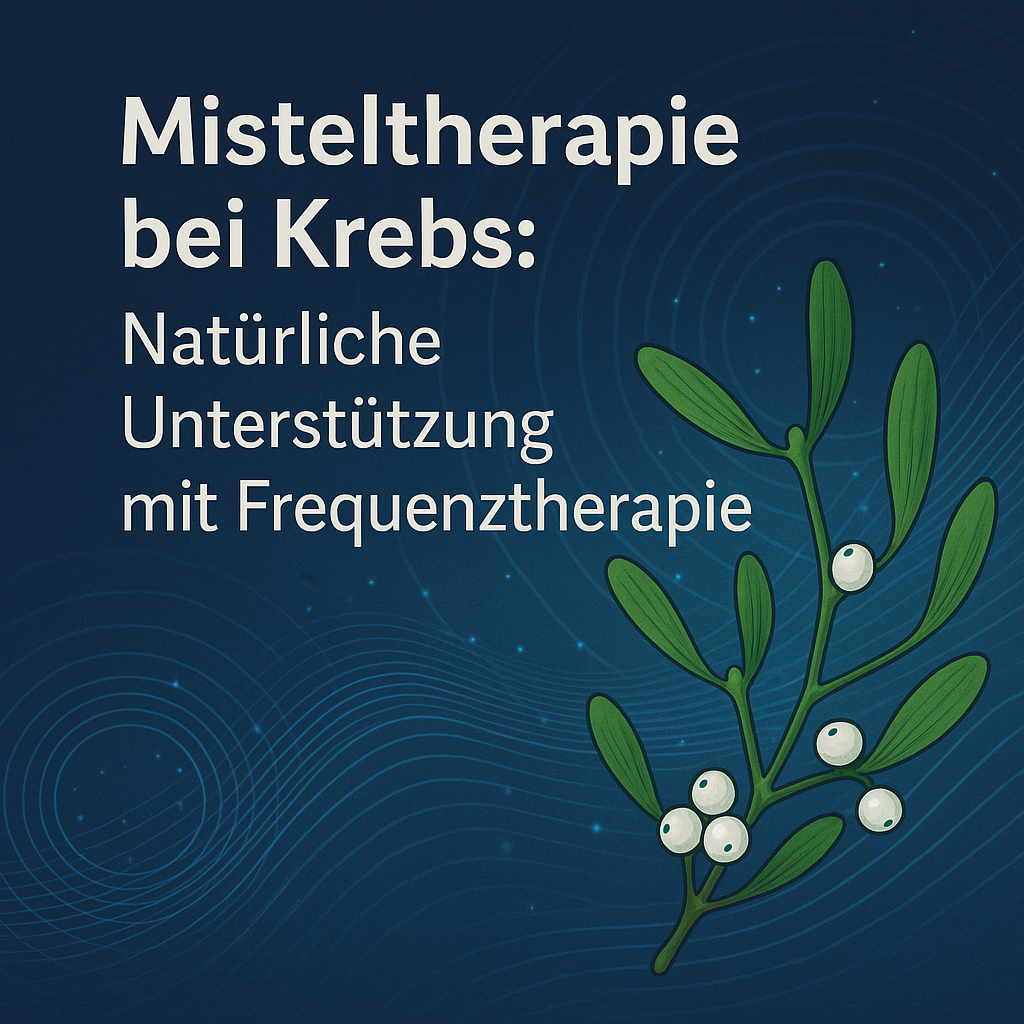
Mistletoe therapy for cancer: natural support with potential
Teaser: Mistletoe has been considered a medicinal plant for centuries - today it is used specifically in cancer therapy, also in combination with frequency therapy.
Introduction: Mistletoe as a medicinal plant
Mistletoe (Viscum album) is one of the most traditional plants in European naturopathy. Its use dates back to ancient times. It has found a firm place in anthroposophical medicine in particular - especially in supportive therapy for cancer.
Mistletoe grows parasitically on various deciduous trees such as apple, oak and lime trees and is particularly visible in winter due to its evergreen spheres. Its ingredients such as lectins, viscotoxins and polysaccharides are used specifically in complementary oncology.
Effects and aims of mistletoe therapy for cancer
Mistletoe therapy pursues several goals - in particular to improve the quality of life and support the immune system during cancer therapy. Studies show, among other things:
- Strengthening the immune system: Mistletoe lectins stimulate immune cells such as T lymphocytes and macrophages.
- Alleviation of tumour-related symptoms: Many patients report less fatigue, loss of appetite and pain.
- Improvement in quality of life: Numerous studies indicate a positive effect on general well-being.
- Possible tumour-inhibiting effect: Mistletoe preparations have shown inhibitory effects on tumour growth in vitro - however, the clinical relevance is still the subject of research.
Important: Mistletoe therapy does not replace conventional cancer treatment, but complements it.
How is mistletoe therapy used?
The therapy is usually administered by subcutaneous injections (under the skin), usually two to three times a week. The choice of preparation depends on the individual clinical picture, the type of tumour and the general condition of the patient. Common preparations come from manufacturers such as Iscador, Helixor or Abnoba.
The dosage is gradual and is customised by trained therapists. Side effects such as local skin reactions or a slight fever are possible, but are often interpreted as signs of an active immune response.
The role of frequency therapy as an accompanying measure
In frequency therapy, we use targeted electromagnetic impulses to stimulate biological systems and support regulatory processes. In tumour patients, we pursue several goals in this way:
- Energetic support of the immune system
- Promotion of detoxification and elimination processes
- Reduction of inflammatory processes and pain symptoms
- Stabilisation of the autonomic nervous system
The combination of mistletoe therapy and frequency therapy has proven itself in practice. Patients often report more energy, better sleep, emotional stability and a higher quality of life.
Clinical studies and effectiveness
The data on mistletoe therapy is mixed, but there are several controlled studies that document positive effects - particularly on quality of life. In Germany, mistletoe therapy is recognised in integrative oncology and is even partially reimbursed by health insurance companies.
The combination with frequency therapy has not yet been comprehensively investigated scientifically, but shows promising synergies in empirical medicine.
Conclusion: Holistic support on a natural basis
Mistletoe therapy offers cancer patients an effective supplement to conventional medical treatment. It supports the immune system, increases well-being and can alleviate stressful symptoms during treatment. In combination with frequency therapy, a holistic treatment concept is created that takes equal account of body and soul.
Note for patients
Mistletoe therapy is not a substitute for cancer therapy recommended by conventional medicine. It should always be carried out in consultation with your oncologist or an experienced complementary medicine therapist.
